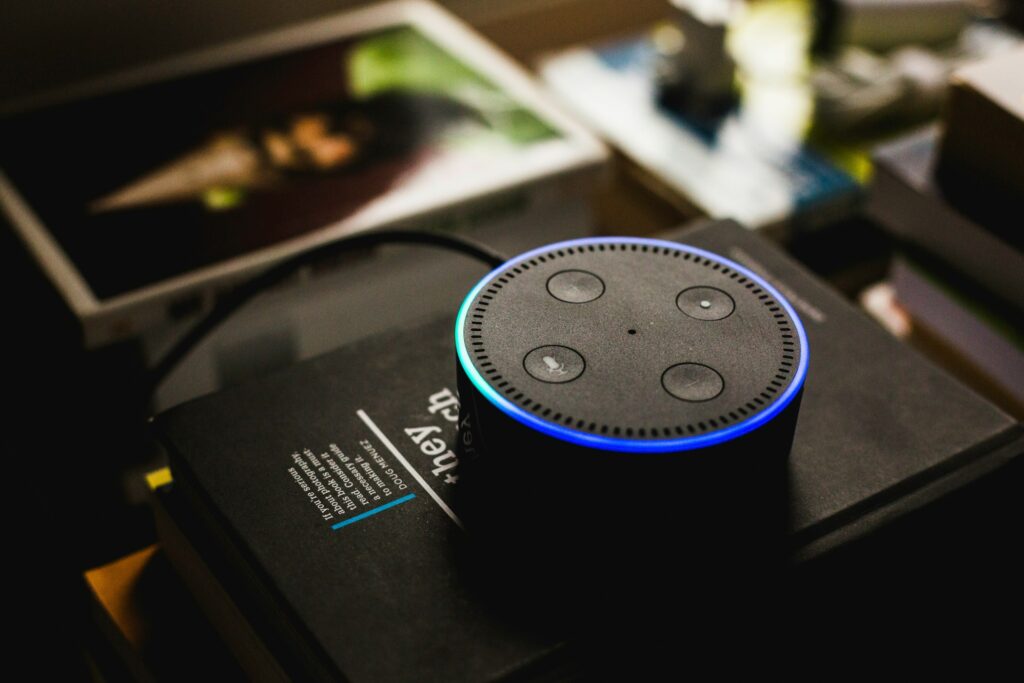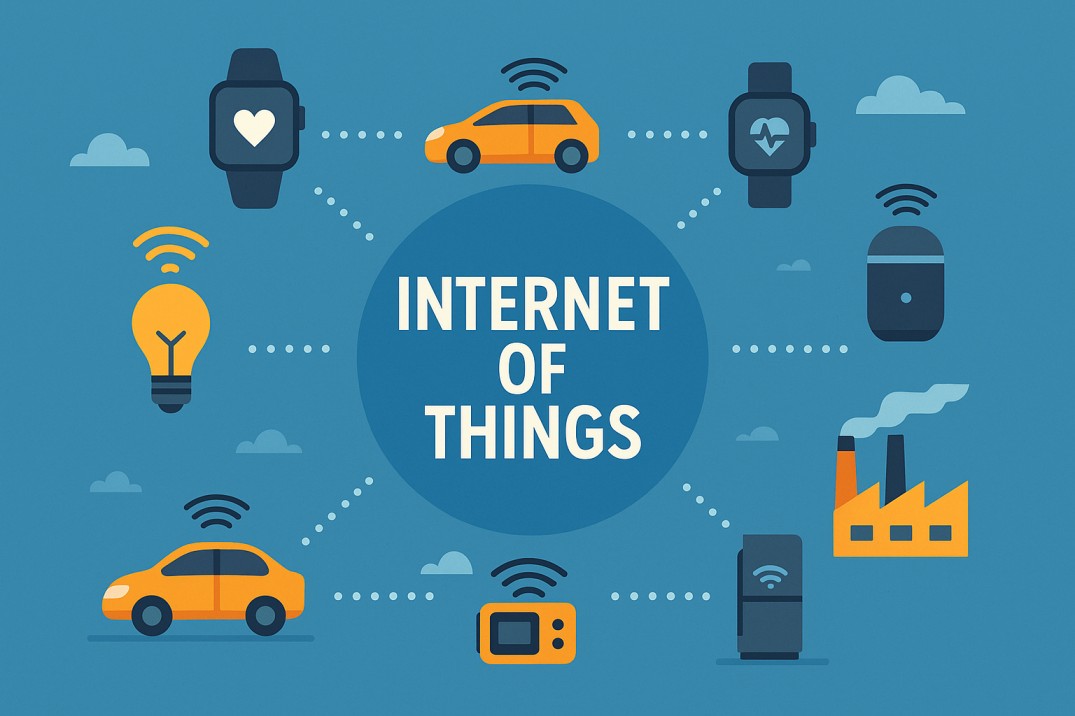The Internet of Things (IoT) alters our living, working, and technology engagement by connecting everyday items to the Internet to share, send and receive data. When all of these known things are connected we have established a sensor- connectivity-data processing- and AI (artificial intelligence) connected ecosystem that allows us to build smarter places at work and home.
What is the Internet of Things?
At its fundamental level, the IoT is a network of physical objects—from home appliances to industrial machinery—that talk to one another via the internet. Devices incorporate sensors to collect data, send it through methods like Wi-Fi or cellular or satellite connections, and either process it on the device (edge computing) or in the cloud. After processing, operators are able to automate action, ski results, and extracted valuable information via mobile apps or dashboards.

Key Features of IoT
- Artificial Intelligence (AI): IoT devices use algorithms based on AI to analyse data, determine probability, and perform control decisions independently, resulting in smarter and responsive devices.
- Connectivity: IoT utilized various communication media (5G, Low Power Wide Area Networks (LPWAN), satellite communications) for the extensive interconnectivity of networked devices.
- Sensors: Sensors are a vital part of the IoT’s ability to collect data regarding real-life happenings to add a level of conscious engagement to the communication of IoT systems with their environments (e.g.), temperature, humidity/motion/health).
- Small Devices: Moores law has important consequences for the size and cost of IoT devices (smaller, cheaper, powerful), it has also meant IoT devices can now be inserted into a wide variety of situations.
- Proactive: IoT enables proactive engagement with devices as opposed to the passive engagement previously required (e.g., collecting data), to control systems and actuate automation.
Applications of IoT in 2025 and Beyond
IoT will be disruptive for many industries and will continue to create innovation and efficiency:
Healthcare:
IoT can over remote patient monitoring systems that can track various health metrics (eg vital signs) in real-time to improve patient care and reduce emergency room visits.
Smart Vehicles:
IoT can connect vehicles using advanced features such as GPS navigation, engine monitoring, and predictive maintenance, creating a more technologically advanced and safer vehicle user experience.
Smart Grids:
Smart Grids collect various rates of data consumption (including predicting outages) to improve operational efficiency that will also improve energy efficiency; and predictive meter readings.
Manufacturing:
Industrial IoT (IIoT) is focused on predictive maintenance, digital twins (a virtual factory simulation), and quality control applications that eliminate equipment downtime and equipment costs.
Smart Homes:
Smart appliances, smart lighting, smart HVAC control, and smart security aspects of smart homes are creating efficiencies and energy savings.
Retail & Logistics:
IoT is creating efficiencies in supply chain management, inventory tracking and management, improved personalized shopping experience, and drone based delivery systems.
Agriculture:
IoT agriculture use cases include precision agriculture and smart livestock, which use IoT sensors to optimize the use of resources and improve yield.
Obstacles to IoT Adoption
IoT has many opportunities but it faces a number of obstacles:
- Security: The explosion in connected devices creates a larger attack surface, leading to greater risks of cyberattack, infiltration, and system viral propagation.
- Interoperability: Achieving interoperability from myriad manufacturers, suppliers, and platforms remains a complex challenge.
- Privacy: The massive amounts of data that IoT devices collect raises difficult privacy questions.
- Scalability and complexity: The growth in the number of devices as an IoT network increases creates challenges for device management and system integrity related to scaling challenges.
Quantum Computing for Beginners: The Next Big Thing in Tech
Related Links :-


1 thought on “Living in a Smart World: IoT Explained for Everyone”